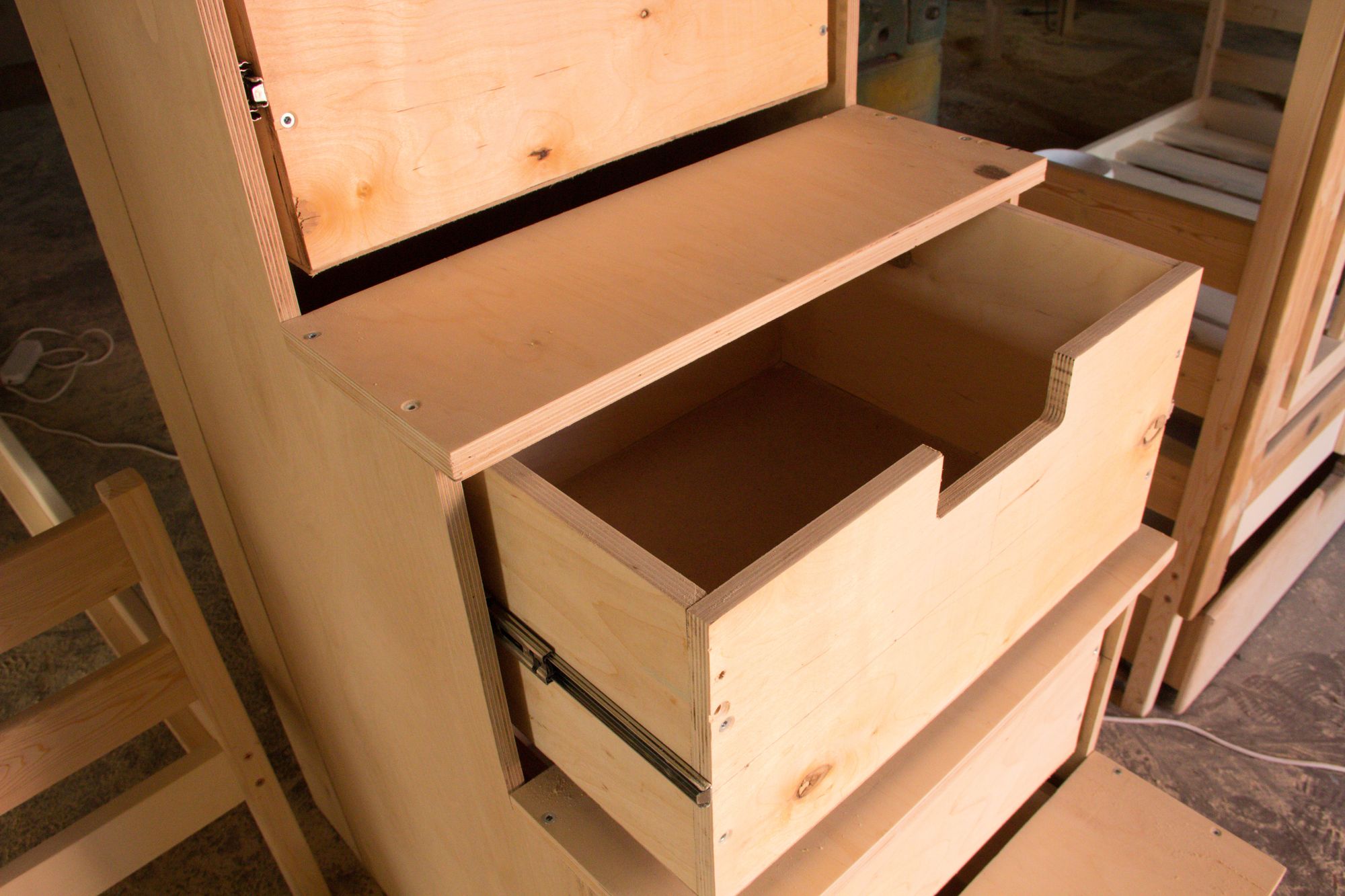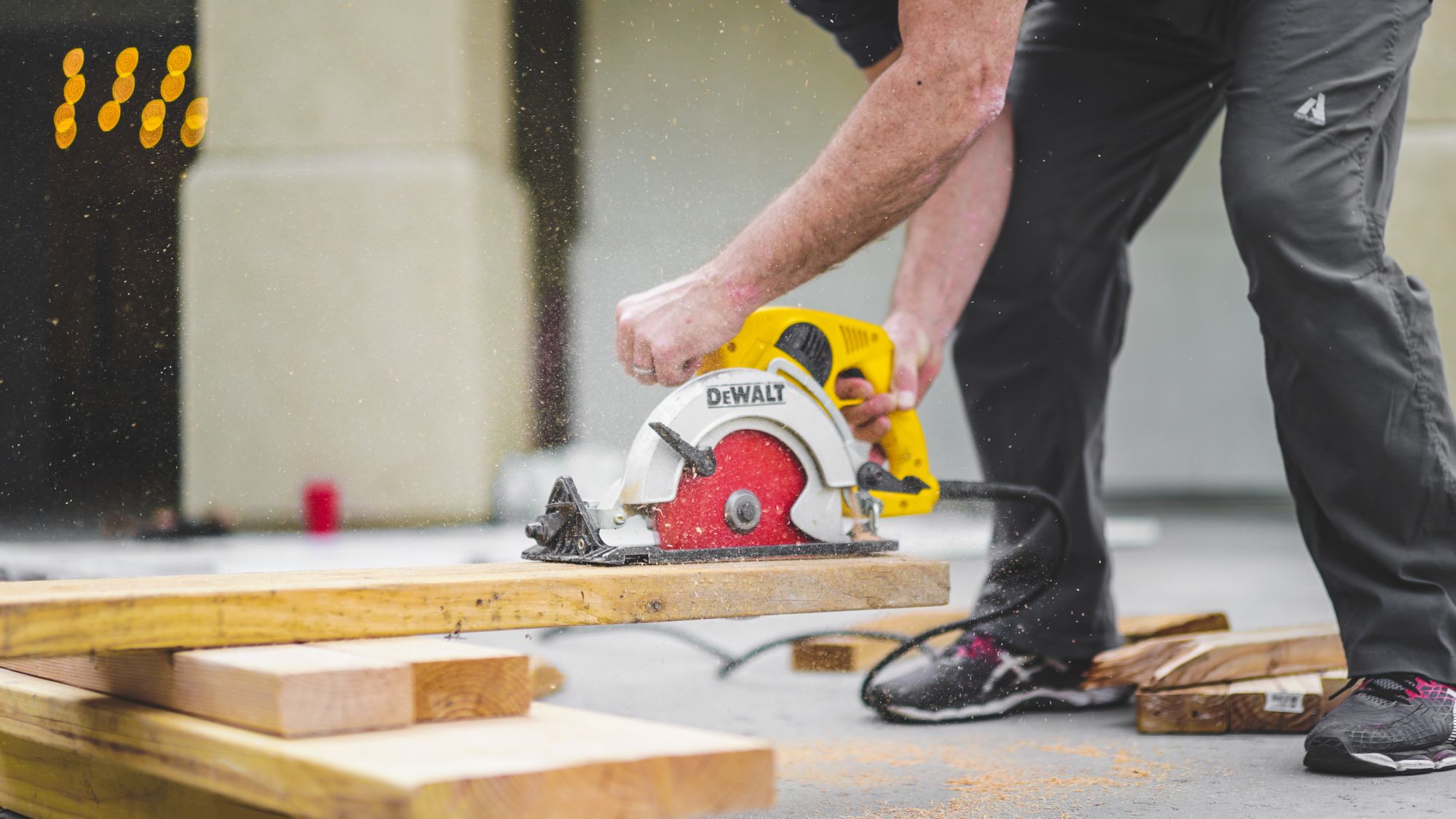As the woodworking industry continues to grow and evolve, it's more important than ever to stay up-to-date with the latest guidelines and regulations for wood production. The woodworking industry generates a whopping $12.3 billion in revenue in the United States alone.
With so much at stake, it's crucial to understand and implement the latest guidelines to ensure safe and sustainable wood production.
But let's face it – guidelines and regulations can be overwhelming and confusing. That's why we're here to help! In this article, we'll guide you through the latest guidelines and regulations for wood production, breaking down complex concepts into easy-to-understand terms.
We'll cover everything from safety protocols to sustainable manufacturing practices, so you can stay on top of the game and produce high-quality wood products that meet the highest standards.

Not only is it essential to meet guidelines for safety and sustainability, but it's also crucial for the success of your business. Consumers are becoming increasingly conscious of the environmental impact of their purchases and are more likely to support companies that prioritize sustainability.
So whether you're a seasoned woodworking pro or just getting started, join us as we explore the latest guidelines and regulations for wood production and how to meet them.
Here's what we shall cover in this post:
- Introduction to Latest Guidelines on Wood Production
- Latest Guidelines on Wood Production
- Meeting Safety Standards in Wood Production
- Compliance with Ethical and Social Responsibility Guidelines in Wood Production
- Supply Chain Management in Wood Production
- Risk Management in Wood Production
- Staff Training and Development in Wood Production
- Monitoring and Evaluation of Wood Production Processes
- Conclusion
- Key Takeaways
Introduction to Latest Guidelines on Wood Production
Wood production has been around for centuries, providing humanity with essential building materials and household products. However, due to the growing concern for sustainability and environmental impact, new guidelines and regulations have been established to ensure that wood production is done responsibly and eco-friendly.
These guidelines aim to reduce the negative impact of wood production on the environment while also promoting a thriving industry.
To ensure compliance with these regulations and standards, wood producers must implement robust tracking and traceability systems. These systems allow companies to track the origin of their wood products and ensure that they come from legal and sustainable sources. They also enable companies to provide customers with transparent information about their products' environmental and social impact.
By following these guidelines, wood production companies can demonstrate their commitment to responsible forestry practices and sustainable sourcing and differentiate their products in the market.
Understanding the Regulatory Framework for Wood Production
Understanding the regulatory framework for wood production is essential for businesses involved in the industry. Here are some key points to consider:
- National regulations: Each country has its own regulations for wood production, which can include requirements for forest management practices, harvesting methods, and worker safety standards. In the United States, for example, the Forest Stewardship Council (FSC) sets standards for responsible forest management and provides certification for companies that meet these standards.
- International regulations: The United Nations has several initiatives in place to promote sustainable forest management and combat illegal logging. The Forest Law Enforcement, Governance, and Trade (FLEGT) program is one such initiative that aims to prevent illegally harvested wood from entering the global market.
- Certification schemes: Various certification schemes exist to help businesses demonstrate compliance with regulations and promote sustainable practices. The FSC certification mentioned earlier is one such scheme, as is the Programme for the Endorsement of Forest Certification (PEFC).
- Chemical regulations: Wood production often involves the use of chemicals, such as pesticides and preservatives. Businesses must comply with regulations governing the use of these chemicals, such as the Registration, Evaluation, Authorization, and Restriction of Chemicals (REACH) regulation in the European Union.
- Worker safety regulations: Wood production can be hazardous, with risks including exposure to chemicals, falling objects, and machine accidents. Regulations governing worker safety, such as the Occupational Safety and Health Administration (OSHA) regulations in the United States, are in place to protect workers from harm.
- Environmental regulations: Wood production can have significant ecological impacts, including deforestation, soil erosion, and loss of biodiversity. Regulations are in place to mitigate these impacts, such as the Clean Water Act in the United States, which regulates the discharge of pollutants into bodies of water.
Latest Guidelines on Wood Production
As the demand for wood products increases, so does the need for sustainable and responsible production methods. In response to this, governments and industry associations have developed guidelines and regulations to ensure that wood production is carried out in an environmentally sound and socially responsible manner.
These guidelines cover everything from forest management practices to the use of chemicals in wood processing.
Forest Stewardship Council (FSC) Certification
The FSC is an international non-profit organization that promotes responsible forest management. The FSC has developed a certification system that allows consumers to identify wood products that come from responsibly managed forests.
The FSC certification system sets standards for forest management, including requirements for protecting wildlife habitats, respecting the rights of indigenous peoples, and minimizing the use of chemicals.
Programme for the Endorsement of Forest Certification (PEFC)
The PEFC is another international non-profit organization that promotes sustainable forest management. The PEFC has developed a certification system that sets standards for forest management, including requirements for protecting biodiversity, maintaining forest health, and respecting the rights of local communities.
The Sustainable Forestry Initiative (SFI)
The SFI is a North American program that promotes sustainable forest management. The SFI sets standards for forest management, fiber sourcing, and chain of custody. The SFI standards include requirements for protecting water quality, wildlife habitats, and the rights of indigenous peoples.
The Forest Products Association of Canada (FPAC)
The FPAC represents Canadian forest products companies and promotes sustainable forest management practices. The FPAC has developed a set of guiding principles for sustainable forest management, which include requirements for protecting biodiversity, minimizing the use of chemicals, and respecting the rights of indigenous peoples.
The European Union Timber Regulation (EUTR)
The EUTR is a regulation that prohibits the placing of illegal timber on the EU market. The EUTR requires companies to exercise due diligence to ensure that the timber they place on the EU market has been legally harvested.
The United States Lacey Act
The Lacey Act is a U.S. law prohibiting illegally harvested wood product importation. The Lacey Act requires companies to exercise due diligence to ensure that the wood products they import into the United States have been legally harvested.
The Clean Air Act
The Clean Air Act is a U.S. law that regulates the emissions of pollutants from industrial processes, including wood processing. The Clean Air Act sets standards for emissions of volatile organic compounds (VOCs), which are harmful to human health and the environment.
Wood processing companies must comply with the Clean Air Act to ensure that their operations do not harm the environment or human health.
The Occupational Safety and Health Act (OSHA)
OSHA is a U.S. law that sets standards for workplace safety. Wood processing companies must comply with OSHA standards to ensure the safety of their employees. OSHA standards cover everything from personal protective equipment to machine guarding to hazard communication.
Meeting Safety Standards in Wood Production
Wood production is an important industry that creates products used in everyday life. However, it is also an industry with potential hazards that must be managed for the safety of workers and the public. Meeting safety standards in wood production are essential to ensure all stakeholders' well-being.
Here are some points to consider when aiming to meet safety standards in wood production:
- Understanding the potential hazards: Before anything else, it is crucial to understand the potential hazards present in wood production. Some common hazards include exposure to wood dust, noise, moving machinery parts, sharp tools, and hazardous chemicals.
- Developing a safety plan: A safety plan can be developed with a good understanding of the hazards present in wood production. This plan should outline the steps that will be taken to minimize or eliminate the risks associated with each hazard. The plan should be reviewed and updated regularly to ensure it remains effective.
- Ensuring equipment is well-maintained: Wood production equipment, such as saws, presses, and drills, should be well-maintained to ensure they are functioning properly and safely. Regular maintenance and inspections can help identify potential hazards before they cause harm.
- Providing proper training: Proper training is critical for ensuring that workers know how to operate equipment safely and follow safety procedures. Workers should receive initial training and regular refresher training to ensure they remain knowledgeable about safety procedures.
- Using personal protective equipment: Personal protective equipment (PPE), such as safety glasses, earplugs, gloves, and respirators, can help protect workers from potential hazards. Employers should provide appropriate PPE and ensure that workers are trained in its proper use.
- Implementing emergency response procedures: Despite best efforts to minimize hazards, accidents can still happen. It is, therefore, vital to have emergency response procedures in place to ensure that workers can respond quickly and effectively to any accidents or emergencies that occur.
- Complying with regulations: There are a number of regulations and standards in place to ensure the safety of workers and the public in wood production. It is essential to comply with these regulations, which may include standards for equipment, work practices, and PPE.
Implementing Quality Management Systems in Wood Production
Implementing quality management systems in wood production ensures consistent quality and meets customer expectations. Here are some key points to consider when implementing quality management systems:
- Understand the standards: Several quality management standards, such as ISO 9001, can be implemented in wood production. It is essential to understand the standards and their requirements before implementing them.
- Create a quality manual: A quality manual outlines the procedures and policies of the quality management system. This manual should include information on how the organization will meet quality standards, customer expectations, and regulatory requirements.
- Establish procedures: Procedures must be established for each stage of wood production, from procurement of raw materials to finished products. These procedures should cover all aspects of wood products, including storage, handling, processing, and delivery.
- Monitor and measure performance: Key performance indicators (KPIs) should be established to monitor and measure the performance of the quality management system. These KPIs may include customer satisfaction rates, defect rates, and delivery times.
- Implement corrective and preventive actions: When quality issues arise, corrective and preventive actions should be implemented to address the root cause of the issue and prevent it from occurring again in the future. This may involve identifying the cause of the issue, taking corrective action, and reviewing the effectiveness of the action.
- Conduct regular audits: Regular internal and external audits should be conducted to ensure that the quality management system works effectively and meets standards. These audits should identify areas for improvement and opportunities to enhance the system.
- Train staff: Training should be provided to all staff involved in wood production to ensure they understand the quality management system and their role in ensuring quality. This training should cover the procedures and policies outlined in the quality manual and any relevant regulatory requirements.
Compliance with Ethical and Social Responsibility Guidelines in Wood Production
- Sustainability: One of the most important aspects of ethical and socially responsible wood production is ensuring that the wood is sustainably sourced. This means the wood comes from well-managed forests replanted after logging. Companies can ensure sustainability by obtaining wood from certified sources such as the Forest Stewardship Council (FSC) or the Programme for the Endorsement of Forest Certification (PEFC).
- Fair labor practices: Another important consideration is ensuring fair labor practices throughout the supply chain. This includes ensuring workers are paid fair wages and safe working conditions. Companies can work with suppliers to ensure that they meet these standards and obtain certification from organizations such as Fair Trade Certified.
- Transparency: Being transparent about wood products' sourcing and production processes is crucial for maintaining trust with consumers. Companies can do this by providing information on their website and packaging about where the wood comes from, how it was produced, and any certifications or standards that were met.
- Social responsibility: In addition to fair labor practices, wood production companies can also engage in social responsibility initiatives such as community development or environmental conservation projects. This can help to build goodwill with consumers and show that the company is committed to making a positive impact beyond just producing wood products.
- Compliance with regulations: Wood production companies must also comply with relevant industry regulations and laws. This includes obtaining necessary permits and licenses, ensuring worker safety, and complying with environmental regulations such as those related to waste management and air emissions.
- Supply chain management: Companies should also ensure that their suppliers and partners throughout the supply chain comply with ethical and social responsibility guidelines. This includes conducting audits and assessments of suppliers to ensure they meet the same standards as the company.
- Continuous improvement: Finally, companies should continuously improve their ethical and social responsibility practices. This includes monitoring their supply chain and production processes for any areas of improvement and working with stakeholders to identify opportunities to make a positive impact.
Supply Chain Management in Wood Production
Supply chain management is a critical aspect of wood production that involves planning, implementing, and monitoring the flow of goods and services from the point of origin to the point of consumption. Ensuring efficient and effective operations, minimizing costs, and enhancing customer satisfaction are essential.
Here are some points to consider when managing the supply chain in wood production:
- Raw Material Sourcing: The first step in managing the supply chain in wood production is sourcing the raw materials. It involves finding the right suppliers who can provide the required quality of wood, meet the delivery deadlines, and comply with sustainability and ethical standards.
- Transportation and Logistics: Once the raw materials are sourced, they need to be transported to the production site. The transportation and logistics process involves selecting the most efficient and cost-effective mode of transport, such as road, rail, or sea, and optimizing the delivery schedules.
- Production Planning and Control: Production planning and control is an essential aspect of supply chain management in wood production. It involves determining the production requirements, setting production schedules, and managing the inventory levels to ensure a steady flow of products to the market.
- Quality Control: Quality control is another critical aspect of supply chain management in wood production. It involves implementing quality control measures at every stage of the production process, from raw material selection to the final product inspection, to ensure that the products meet the required standards.
- Distribution and Sales: After the wood products are manufactured, they need to be distributed to the retailers or customers. The distribution process involves selecting the most efficient and cost-effective distribution channels, such as direct sales or through distributors, and optimizing the delivery schedules to ensure timely delivery.
- Inventory Management: Efficient inventory management is essential to ensure that the wood products are available in sufficient quantities to meet the demand. It involves managing the inventory levels, optimizing the replenishment schedules, and minimizing the inventory holding costs.
- Technology and Automation: Technology and automation can play a significant role in managing the supply chain in wood production. It involves implementing software systems, such as enterprise resource planning (ERP) and warehouse management systems (WMS), to automate the processes, optimize the inventory levels, and enhance the supply chain visibility.
- Sustainability and Ethical Standards: Finally, it is essential to comply with the sustainability and ethical standards in the wood production supply chain. It involves implementing responsible sourcing practices, ensuring compliance with environmental and social regulations, and promoting sustainable and ethical practices throughout the supply chain.
Process Optimization for Improved Productivity and Quality
Process optimization is the practice of identifying and improving the production process to increase efficiency, productivity, and quality. Process optimization can help reduce waste, improve product consistency and quality, and increase production capacity in the wood production industry.
- Identifying and analyzing current production processes: Before making any changes, it is crucial to identify and analyze the current production processes. This involves looking at each step of the process and determining where improvements can be made. This can include analyzing the equipment and tools used, the materials and supplies used, and the workforce involved.
- Implementing Lean Manufacturing Principles: Lean manufacturing is a production method that focuses on eliminating waste and increasing efficiency. By implementing lean manufacturing principles, wood production companies can reduce costs, improve quality, and increase productivity. Some of the key principles of lean manufacturing include continuous improvement, value stream mapping, and just-in-time production.
- Using Computer-Aided Design and Manufacturing (CAD/CAM): Computer-Aided Design and Manufacturing (CAD/CAM) is a technology that allows the design and production of wood products using computer software. CAD/CAM can help streamline production, reduce errors, and increase productivity. It can also allow for greater design flexibility and customization.
- Investing in Automation and Robotics: Automation and robotics can be used in wood production to perform repetitive tasks, such as sanding or cutting, and can help increase efficiency and productivity. Robotics can also be used for quality control and inspection, reducing the risk of human error.
- Implementing Total Productive Maintenance (TPM): Total Productive Maintenance (TPM) improves productivity and reduces downtime by ensuring that all equipment is properly maintained and serviced. By implementing TPM, wood production companies can reduce the risk of equipment breakdowns and increase production capacity.
- Adopting a Continuous Improvement Culture: Continuous improvement is a mindset that encourages ongoing evaluation and improvement of production processes. By adopting a continuous improvement culture, wood production companies can create a culture of innovation and progress, leading to better products and greater customer satisfaction.
Risk Management in Wood Production
Risk management is an essential aspect of wood production. It involves identifying and evaluating risks, determining how to mitigate them, and developing strategies to address any issues that arise. Risks in wood production can be related to worker safety, equipment failure, environmental concerns, supply chain disruptions, and quality control issues.
Risk assessment: The first step in effective risk management is to conduct a thorough risk assessment. This involves identifying all potential risks and evaluating their likelihood and potential impact on the wood production process.
Risks may include issues related to worker safety, equipment failure, environmental concerns, supply chain disruptions, and quality control issues. By identifying potential risks, wood production companies can develop strategies to mitigate them.
Safety procedures: Worker safety is a critical aspect of wood production, and it is essential to have robust safety procedures in place to minimize the risk of accidents and injuries.
These procedures should include training programs for employees, regular safety audits, and the use of personal protective equipment (PPE). By implementing these procedures, wood production companies can reduce the risk of accidents and ensure that workers are protected while on the job.
Equipment maintenance: Equipment failure can result in significant disruptions to wood production operations, so it is essential to have a robust maintenance program in place to minimize this risk. This should include regular inspections of equipment, proactive maintenance measures, and a system for quickly identifying and addressing any issues that arise.
By implementing these measures, wood production companies can reduce the risk of equipment failure and minimize the impact of any issues that do arise.
Environmental concerns: Environmental concerns are a growing issue in wood production, and it is essential to have strategies in place to minimize the risk of environmental damage. This may include measures such as using sustainable wood sources, reducing waste and emissions, and complying with relevant environmental regulations.
By implementing these measures, wood production companies can reduce the risk of environmental damage and ensure that their operations are sustainable in the long term.
Supply chain disruptions: Supply chain disruptions can result in significant delays and cost overruns in wood production operations, so it is essential to have strategies in place to minimize this risk. This may include having multiple suppliers for critical materials, maintaining buffer stocks of key inputs, and developing contingency plans for dealing with disruptions.
By implementing these measures, wood production companies can reduce the risk of supply chain disruptions and ensure that their operations remain efficient and cost-effective.
Staff Training and Development in Wood Production
Staff training and development play a vital role in the wood production industry to ensure the production of high-quality products, minimize accidents, improve productivity, and increase employee satisfaction.
Benefits of Staff Training and Development
- Improved productivity: Staff training and development help employees acquire new skills and knowledge that they can use to improve their productivity and efficiency.
- Higher quality products: Proper training ensures that employees understand the production process and can produce high-quality products.
- Increased safety: Staff training can help reduce the risk of accidents and injuries by teaching employees how to properly use machinery and handle materials.
- Higher employee satisfaction: Training and development opportunities can help employees feel valued and invested in the company, leading to higher levels of job satisfaction and employee retention.
- Better customer service: Training can help employees develop communication and problem-solving skills, which can lead to better customer service.
Types of Staff Training and Development
- On-the-job training: This involves learning new skills while performing regular job duties under the supervision of a more experienced employee.
- Classroom training: Classroom training can be formal or informal and can cover a range of topics, including safety, machinery operation, and product quality.
- Online training: Online training can be a cost-effective way to provide training to employees, and it can be accessed from anywhere.
- Cross-training: Cross-training involves training employees to perform tasks outside of their regular job duties, which can lead to greater flexibility and productivity.
- Mentorship: Pairing new employees with experienced mentors can help new hires learn about the company culture and industry best practices.
Tips for Effective Staff Training and Development
- Start with an assessment: Assess your employees' skills and knowledge gaps to identify areas where training is needed.
- Set clear goals and objectives: Clearly define the goals and objectives of the training program and communicate them to employees.
- Make training relevant: Ensure that the training is relevant to employees' job duties and the company's production goals.
- Use a variety of training methods: Use a combination of on-the-job training, classroom training, online training, and other methods to keep employees engaged and motivated.
- Follow up: Follow up with employees after training to ensure that they have retained the information and are applying it in their work.
Monitoring and Evaluation of Wood Production Processes
Importance of Monitoring and Evaluation in Wood Production: Monitoring and evaluation are essential components of any production process, including wood production. These processes help identify inefficiencies, reduce waste, and ensure product quality.
Monitoring the production process to ensure that the products meet the required standards and specifications is crucial.
Steps Involved in Monitoring and Evaluation: The first step in monitoring and evaluating wood production processes is to identify the key performance indicators (KPIs) that are relevant to your business.
The KPIs should be measurable and aligned with the company's goals and objectives. Some examples of KPIs in wood production include throughput, waste reduction, and quality.
Implementing Monitoring and Evaluation Systems: Once the KPIs have been identified, the next step is to implement a monitoring and evaluation system. This system should be designed to collect data on the KPIs and provide real-time feedback on the production process.
The system can be automated, manual, or a combination of both. The data collected can be used to identify inefficiencies and implement corrective measures.
Continuous Improvement: The data collected through the monitoring and evaluation system should be used to drive continuous improvement.
The production process should be evaluated regularly, and any inefficiencies or bottlenecks identified should be addressed. This will help improve the process's efficiency, reduce waste, and improve product quality.
Training and Education: It is essential to provide training and education to employees on the monitoring and evaluation system. This will ensure that they understand the system and can provide accurate data.
Training should be provided on an ongoing basis to ensure that employees are up to date with the latest processes and technologies.
Data Analysis: Data analysis is an essential component of monitoring and evaluation. The data collected should be analyzed regularly to identify trends and patterns. This analysis can help identify the root cause of problems and develop solutions to address them.
Collaboration: Collaboration is crucial in monitoring and evaluating wood production processes. Different departments, including production, quality control, and maintenance, should work together to identify and solve problems. Collaboration can help to identify inefficiencies and develop effective solutions.
Evaluation of Suppliers: Monitoring and evaluation should also extend to suppliers. Suppliers should be evaluated regularly to ensure that they meet the required standards and specifications.
This will help to ensure that the raw materials used in the production process meet the required quality standards.
Sustainable Wood Manufacturing Practices
Sustainable wood manufacturing practices are crucial in today's world, where environmental issues and climate change are increasingly important. It's crucial for companies to not only focus on producing high-quality products but also to do so in an environmentally responsible manner.
Here are some key points to keep in mind when implementing sustainable wood manufacturing practices:
- Use of Sustainable Materials: One of the most important steps towards sustainable wood manufacturing practices is to use sustainable materials. This involves sourcing wood from responsibly managed forests that are certified by organizations such as the Forest Stewardship Council (FSC) or the Programme for the Endorsement of Forest Certification (PEFC). These certifications ensure that the forests are managed environmentally and socially responsibly.
- Energy Efficiency: Energy usage is a significant component of the manufacturing process, and it's essential to implement measures that improve energy efficiency. This includes using renewable energy sources such as solar, wind, or hydropower and adopting energy-efficient technologies to reduce overall energy consumption.
- Waste Management: Waste management is another critical component of sustainable wood manufacturing. The goal should be to minimize waste and reduce environmental impact. This can be done through measures such as recycling, reusing or repurposing waste materials, and implementing efficient waste management systems.
- Reduced Carbon Footprint: Reducing the carbon footprint is another essential aspect of sustainable wood manufacturing. This can be achieved through measures such as reducing transportation and logistics costs, using eco-friendly packaging materials, and implementing sustainable practices in production.
- Reduced Water Usage: Water usage is a significant component of wood manufacturing, and it's essential to implement measures that reduce water usage. This includes implementing water-saving technologies, reusing and recycling water, and ensuring that water discharge meets environmental regulations.
- Sustainable Packaging: Sustainable packaging is another critical component of sustainable wood manufacturing practices. This involves using eco-friendly packaging materials that minimize environmental impact, such as biodegradable or compostable materials.
- Compliance with Environmental Regulations: Environmental regulations are crucial for sustainable wood manufacturing practices. This involves staying up to date with environmental regulations and ensuring that all manufacturing processes are in compliance.
- Collaboration with Stakeholders: Collaboration with stakeholders, including suppliers, customers, and regulatory agencies, is critical for implementing sustainable wood manufacturing practices. This collaboration can help identify areas of improvement and implement new sustainable practices.
How Deskera Can Assist You?
Deskera MRP allows you to closely monitor the manufacturing process. From the bill of materials to the production planning features, the solution helps you stay on top of your game and keep your company's competitive edge.

Deskera ERP and MRP system can help you:
- Manage production plans
- Maintain Bill of Materials
- Generate detailed reports
- Create a custom dashboard
Deskera ERP is a comprehensive system that allows you to maintain inventory, manage suppliers, and track supply chain activity in real-time, as well as streamline a variety of other corporate operations.
Deskera Books enables you to manage your accounts and finances more effectively. Maintain sound accounting practices by automating accounting operations such as billing, invoicing, and payment processing.
Deskera CRM is a strong solution that manages your sales and assists you in closing agreements quickly. It not only allows you to do critical duties such as lead generation via email, but it also provides you with a comprehensive view of your sales funnel.
Deskera People is a simple tool for taking control of your human resource management functions. The technology not only speeds up payroll processing but also allows you to manage all other activities such as overtime, benefits, bonuses, training programs, and much more. This is your chance to grow your business, increase earnings, and improve the efficiency of the entire production process.
Conclusion
Meeting the latest guidelines on wood production is critical to ensuring the sustainability and safety of the industry. The guidelines and regulations set by government bodies and industry organizations aim to protect the environment, ensure workers' safety, and provide consumers with high-quality products.
Manufacturers must stay up-to-date with the latest guidelines and regulations and work to incorporate them into their production processes. This may involve investing in new equipment, implementing new procedures, and conducting regular training for employees.
Additionally, manufacturers can work with suppliers and customers to ensure that the entire supply chain is aligned with the latest guidelines and regulations. Manufacturers can create a more sustainable, efficient, and profitable industry by taking a proactive approach to meet the latest guidelines on wood production.
Ultimately, the success of the industry depends on its ability to adapt and evolve with the changing landscape of regulations and consumer demands. Through a commitment to meeting the latest guidelines and regulations, manufacturers can position themselves for long-term success and contribute to the overall growth and sustainability of the industry.
Key Takeaways
- Government bodies and industry organizations have set guidelines and regulations to protect the environment, ensure worker safety, and provide consumers with high-quality products.
- Manufacturers must stay up-to-date with the latest guidelines and regulations and work to incorporate them into their production processes.
- This may involve investing in new equipment, implementing new procedures, and conducting regular training for employees.
- Manufacturers can work with suppliers and customers to ensure that the entire supply chain is aligned with the latest guidelines and regulations.
- A proactive approach to meeting the latest guidelines on wood production can create a more sustainable, efficient, and profitable industry.
- The success of the industry depends on its ability to adapt and evolve with the changing landscape of regulations and consumer demands.
- Understanding the specific guidelines and regulations that apply to your industry and operation is essential.
- Conduct regular assessments of your operation to ensure compliance with the latest guidelines and regulations.
- Implement best practices in your operation to ensure compliance with guidelines and regulations and create a safer and more efficient workplace.
- Incorporate sustainability measures into your operation to reduce environmental impact and contribute to a more sustainable industry.
Related Articles














